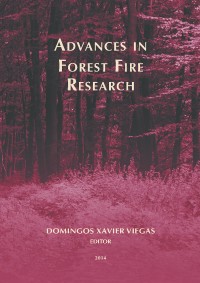Please use this identifier to cite or link to this item:
https://hdl.handle.net/10316.2/34319| Title: | Improving wildfire spread simulations using MODIS active fires: the FIRE-MODSAT project | Authors: | Sá, Ana Benali, Akli Pinto, Renata Fernandes, Paulo Russo, Ana Santos, Fábio Trigo, Ricardo Pereira, José Jerez, Sónia Camara, Carlos da |
Keywords: | Fire growth simulations;satellite active-fires;FARSITE;FIRE-MODSAT | Issue Date: | 2014 | Publisher: | Imprensa da Universidade de Coimbra | Journal: | http://hdl.handle.net/10316.2/34013 | Abstract: | Wildfires are an important ecological disturbance in Mediterranean forests and have dramatic social, economic and environmental impacts. Portugal is already experiencing an increase in the number and extent of wildfires, with records of burnt extent exceeding 400,000ha and 300,000ha in 2003 and 2005, respectively. With the projected future increase in the frequency of large wildfires, those negative impacts and fire suppression difficulties will also likely increase. Spatially explicit wildfire spread models (e.g. FARSITE) are one of the most effective tools to understand complex interactions among topography, vegetation fuel and weather conditions. These models can be used not only to study past fire events but also for forecasting fire spread and behavior. MODIS active fires have a large potential to provide relevant information regarding the spatio-temporal distribution of large wildfire events. When combined with fire spread models, they may provide crucial information to overcome the error propagation that arise when simulating large and long duration wildfire events, which is crucial for monitoring and forecasting fires in an operational fire-fighting context. We investigated nine large wildfires (>=10,000ha) that occurred in Portugal between 2001 and 2012 in order to evaluate if combining fire growth simulations with active fire data improves the accuracy of fire spread predictions. To achieve this goal we propose to: 1) simulate fire growth using FARSITE model in combination with the time and spatial information of the MODIS active fires during the fire event propagation; and 2) assess the performance of fire spread simulations comparing them with the spatio-temporal distribution of the active fires. Additionally we performed a sensitivity analysis to evaluate the impact of key model parameters and variables on fire growth simulations, to understand the main sources of error and identify future work needed to improve the use of combined model-satellite approach in an operational context. Results show that fire growth simulations are improved when satellite-derived active fires were used to reinitialize the simulation while the fires are occurring. Sørensen coefficients obtained for these simulations assisted by MODIS active fires were all above 0.5, showing a significant improvement over full fire growth event simulations. This innovative approach of combining satellite active fires data with fire spread simulations reduces the propagated errors of the large and long duration fire events and improves the forecasting ability of fire spread models. | URI: | https://hdl.handle.net/10316.2/34319 | ISBN: | 978-989-26-0884-6 (PDF) | DOI: | 10.14195/978-989-26-0884-6_90 | Rights: | open access |
| Appears in Collections: | Advances in forest fire research |
Files in This Item:
| File | Description | Size | Format | |
|---|---|---|---|---|
| 978-989-26-0884-6_90.pdf | 2.06 MB | Adobe PDF |  |
Items in DSpace are protected by copyright, with all rights reserved, unless otherwise indicated.
